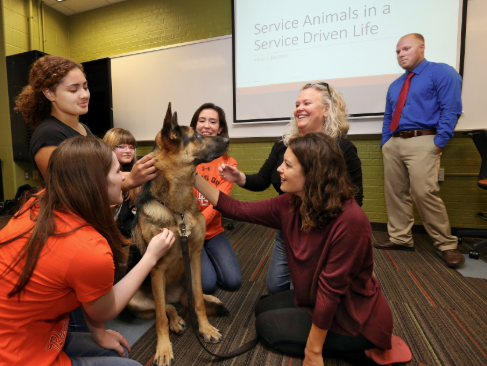For students who are passionate about animals and are considering a future in veterinary medicine, pre-vet high school programs offer a fantastic opportunity to get an early start. These specialized programs combine hands-on experience with foundational education, providing aspiring veterinarians with the skills and knowledge they need to pursue their dreams.
What Are Pre-Vet High School Programs?
Pre-vet programs are designed to introduce high school students to the field of veterinary science. These programs often include a mix of classroom learning and practical experiences, helping students gain a deeper understanding of animal care, biology, and medicine. While not all high schools offer formal pre-vet programs, many have extracurricular clubs, partnerships with local veterinary clinics, or specialized courses to support students interested in this field.
Key Components of Pre-Vet Programs
Pre-vet programs vary depending on the school, but most offer a combination of the following elements:
1. Animal Science Education
At the heart of most pre-vet programs is a strong focus on animal science. Students learn about animal biology, behavior, nutrition, and health. This foundational knowledge is essential for anyone pursuing a career in veterinary medicine, as it forms the basis for understanding how animals function and how to care for them. Classes often cover subjects like anatomy, physiology, genetics, and even animal diseases.
2. Hands-On Experience with Animals
One of the most valuable aspects of a pre-vet program is the opportunity for students to gain real-world experience working with animals. This could include volunteering at local animal shelters, working with farm animals, or assisting in veterinary clinics. Students might also participate in school-based programs where they care for small animals or take part in animal training exercises.
This hands-on experience helps students develop essential skills such as handling animals, observing their behavior, and learning how to provide basic care. It also gives students a glimpse into what a career in veterinary medicine might entail.
3. Veterinary Skills and Techniques
In addition to classroom learning, pre-vet students often learn basic veterinary techniques, such as administering vaccinations, taking vital signs, or helping with minor medical procedures under supervision. These skills are vital for anyone pursuing a career as a veterinarian or veterinary technician.
Students may also be introduced to equipment used in veterinary medicine, like stethoscopes, thermometers, and diagnostic tools. This exposure allows them to become familiar with the tools of the trade and develop practical skills that will be helpful in future veterinary studies.
4. Career Exploration and Guidance
Pre-vet programs often include mentorship opportunities where students can connect with practicing veterinarians or veterinary technicians. This gives students the chance to learn more about the profession, ask questions, and gain insights into the day-to-day responsibilities of a veterinarian.
Additionally, some programs provide career counseling and guidance for students interested in pursuing higher education in veterinary science. This can include information on the college application process, selecting veterinary schools, and understanding the different career paths within the veterinary field.
5. Introduction to Veterinary Science Careers
In pre-vet programs, students may also explore various career options within veterinary science. These can include traditional veterinary roles, such as small animal practice or large animal practice, as well as specialty fields like animal behavior, surgery, or emergency care. Some students may also learn about related fields like animal research or wildlife conservation, broadening their understanding of the many possibilities within the profession.
6. Community Outreach and Volunteering
Many pre-vet programs emphasize the importance of community service and giving back to animals in need. Students may participate in community outreach programs that focus on animal welfare, such as organizing vaccination clinics or educational events about responsible pet ownership. These activities help students understand the ethical responsibilities that come with caring for animals and allow them to make a positive impact in their communities.
Benefits of Pre-Vet High School Programs
Enrolling in a pre-vet program during high school can offer many benefits to students considering a career in veterinary medicine:
Hands-On Experience: Students gain valuable real-world experience with animals, which is essential for anyone entering the veterinary field.
Career Exploration: Pre-vet programs provide students with the opportunity to explore different veterinary careers and understand what each one entails.
College Preparation: These programs prepare students for the rigorous academic requirements of veterinary school by giving them a solid foundation in biology and animal science.
Developing Compassion and Responsibility: Working with animals teaches students empathy, compassion, and the responsibility that comes with caring for living creatures.
Stronger College Applications: Students who complete pre-vet programs may stand out in the college admissions process, especially when applying to veterinary schools or animal science programs.
Conclusion
Pre-vet high school programs are an excellent way for students to begin their journey toward a career in veterinary medicine. By offering a combination of classroom education, hands-on experience, and career exploration, these programs provide students with the tools they need to succeed in the competitive field of veterinary science. Whether it’s caring for animals, learning veterinary techniques, or gaining exposure to the diverse career opportunities in the field, a pre-vet program can help shape the future of aspiring veterinarians.














